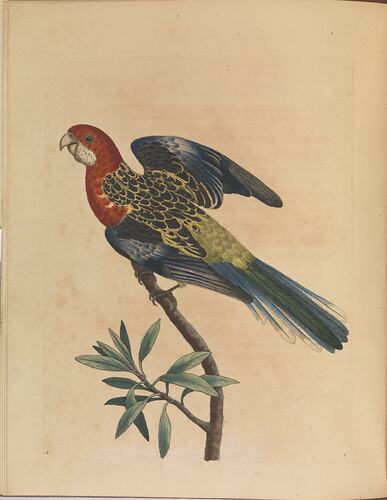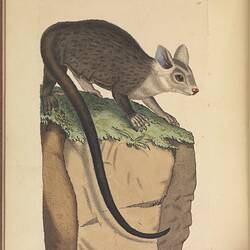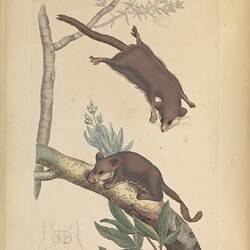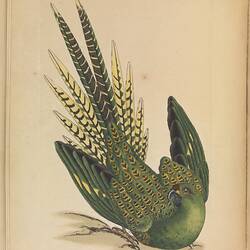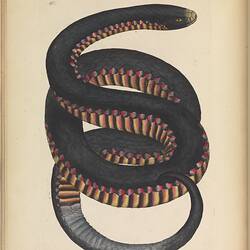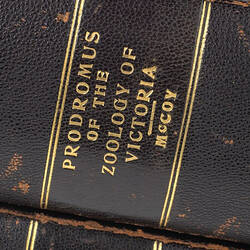Summary
This text is written by George Shaw, Keeper of the Natural History at the British Museum, and the illustrations are hand-coloured engravings by English naturalist and illustrator James Sowerby. It was originally intended to form part of a larger work on the botany and zoology of Australia, then called New Holland in Europe, however only one volume in each discipline was published. Initially, a smaller joint title with a total of 8 plates was issued, followed by separate botany and zoology volumes. Sometimes the two works are found bound together as 'Zoology and botany of New Holland and the isles adjacent'.
Neither Shaw nor Sowerby had ever visited Australia, and the descriptions and illustrations were based on pickled specimens or dried skins shipped back to London. The work was printed by J. Davis and published by James Sowerby in London in 1794. The title page states "Published by J. Sowerby, no. 2, Mead Place, Lambeth; to be had / at no. 42 Paternoster Row, and of the town / and country booksellers."
Physical Description
33 numbered pages of letterpress, 12 plates : hand coloured engravings ; 28 cm. English language. Twentieth century cloth binding.
Significance
This is the first book on Australian fauna, the first to use the unqualified term "Australia" and the first to describe two animal species in Western science: the red-bellied black snake Pseudechis porphyriacus and the feathertail glider Acrobates pygmaeus.
George Shaw was a doctor, Fellow of the Royal Society of London, co-founder of the Linnean Society of London, and was also the Keeper of Natural History at the British Museum, where he came into contact with many animal specimens sent back from British colonies, such as Australia. He was the first to describe a number of Australian animals in Western science, including the platypus, echidna, and wombat.
'Zoology of New Holland' is one of the rarest Australian colour-plate books - the author of the facsimile edition (2011) estimates that fewer than 20 copies are extant. Trove and Worldcat indicate 15 copies of this edition held in public collections worldwide, including eight libraries in Australia. This was one of the early purchases made by Professor McCoy for the National Museum of Victoria.
More Information
-
Collecting Areas
-
Author
-
Engraver
James Sowerby, London, England, 1794
Sowerby was the illustrator and publisher of the work. -
Purchaser of Item Depicted
Prof Frederick McCoy - University of Melbourne (The), Melbourne, Victoria, Australia, 1862
The book was purchased from Macmillan & Co. in 1862. -
Inscriptions
Title page bears the stamp of the National Museum Victoria. "29.3.00" inscribed in pencil in top left corner of t.p.
-
Category
-
Discipline
-
Type of item
-
Exhibition Collection Management
228 mm (Width), 16 mm (Depth), 278 mm (Height)
-
Maximum dimensions
227 mm (Length), 278 mm (Width), 12 mm (Height)
Measurement From Conservation.
-
References
Online version via BHL: [Link 1] Calaby, J. H. 1967, 'Shaw, George (1751-1813)', Australian Dictionary of Biography, National Centre of Biography, Australian National University, [Link 2] published first in hardcopy 1967, accessed online 9 November 2021. Shaw, George 2011, Zoology of New Holland, Adelaide, Friends of the State Library of South Australia.
-
Keywords
Natural history illustration, Natural history literature, Zoology, Snakes, Birds, Mammals
